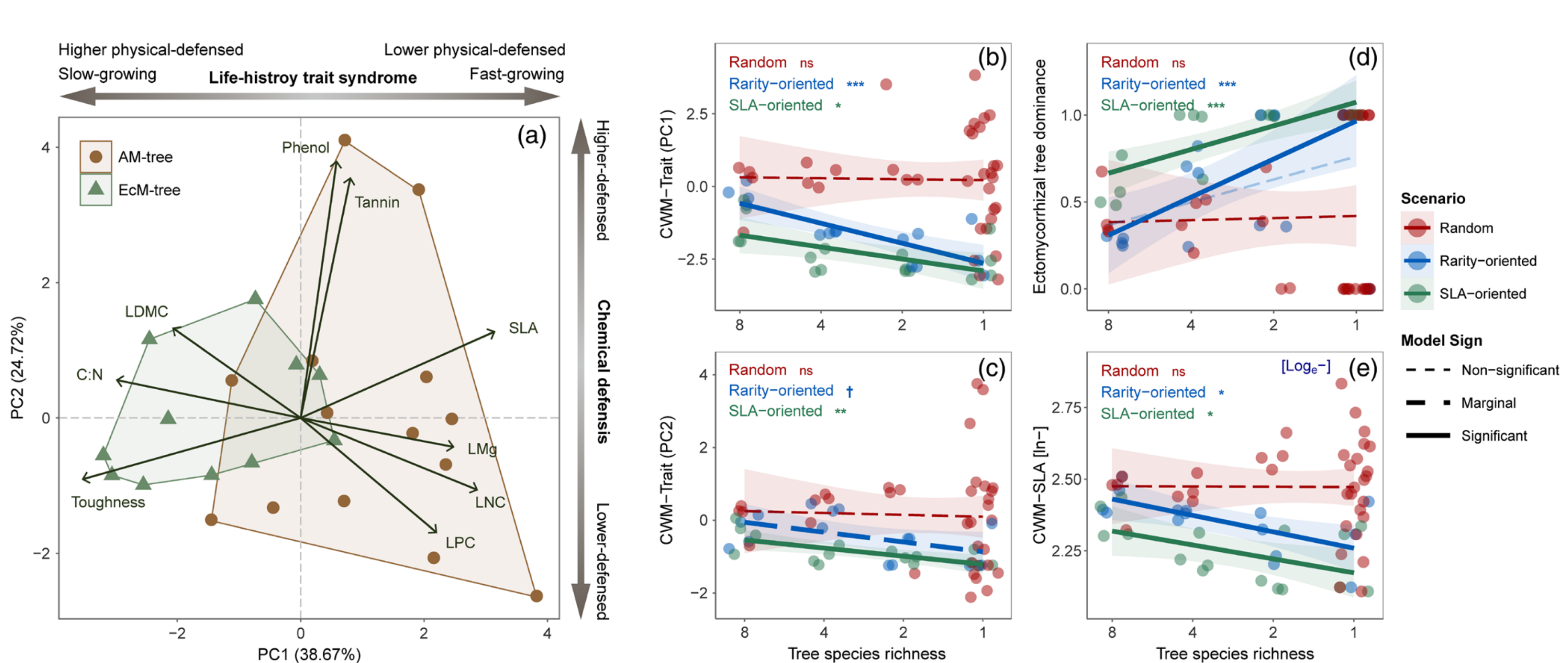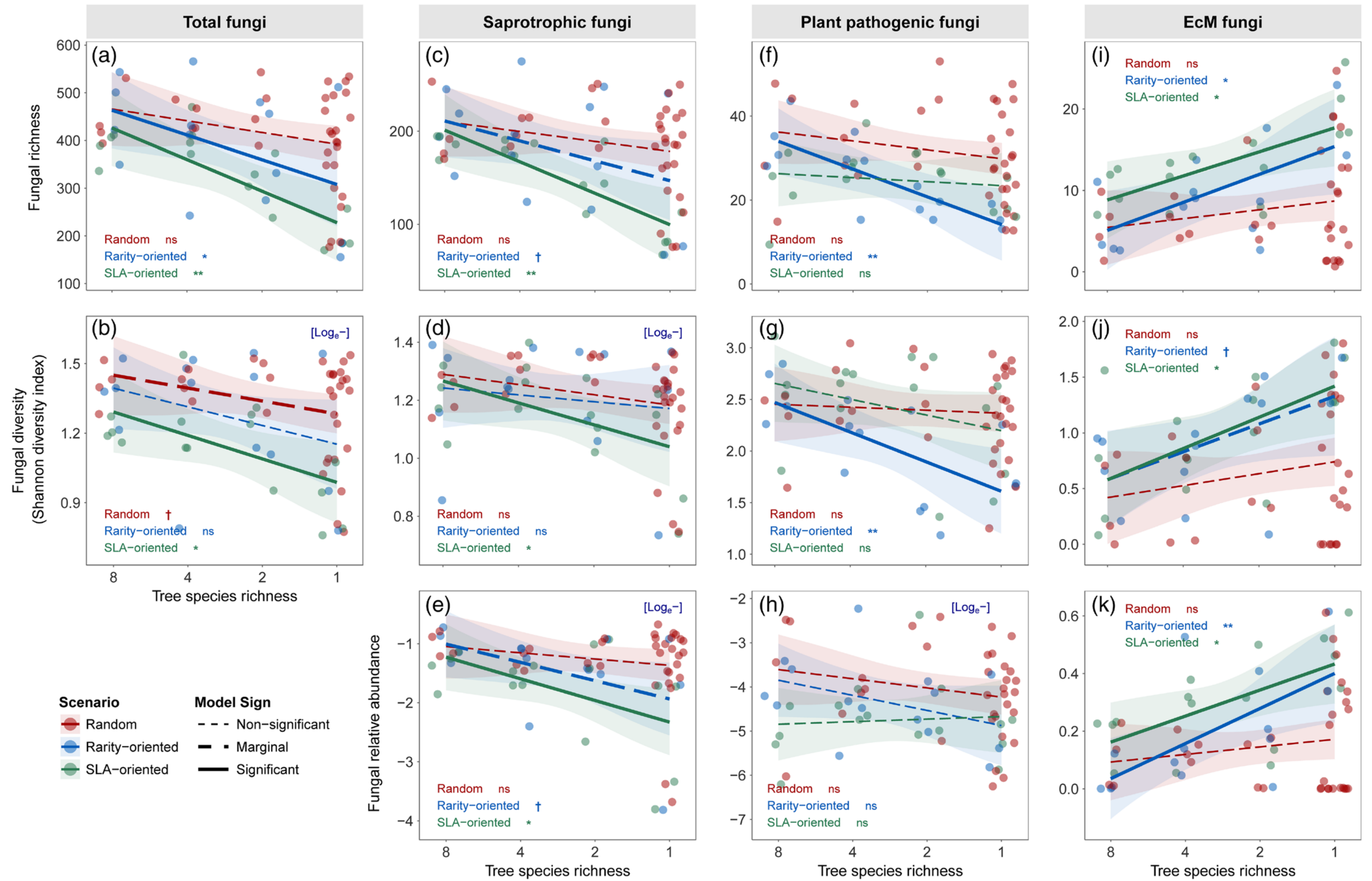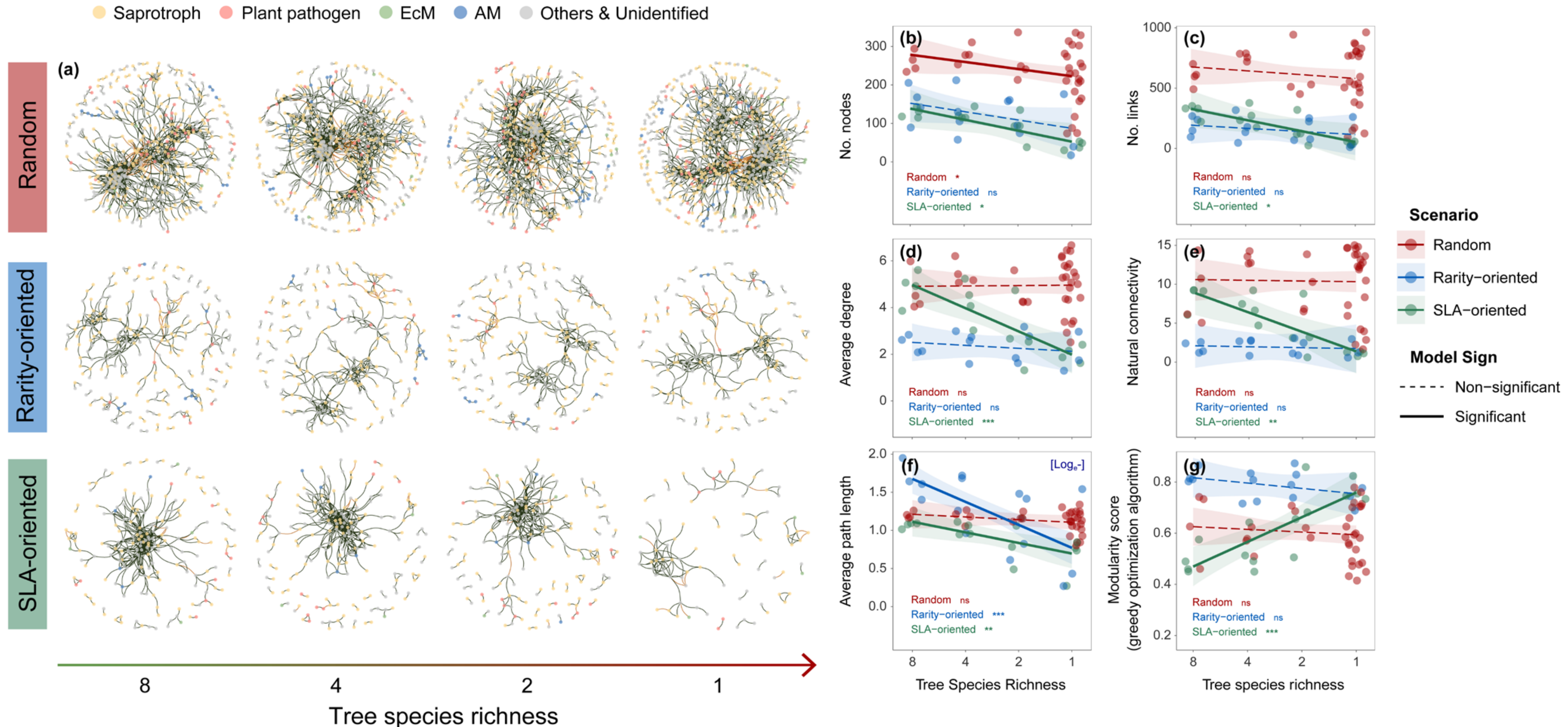-
Ongoing global changes speed up forest diversity loss, typically in a non-random manner, with potential consequences for soil fungal communities. However, it remains elusive how non-random tree species loss, based on distribution ranges or specific traits, impacts soil fungal communities.
-
Here we employed a large-scale field experiment where random and non-random tree species losses were experimentally manipulated, to estimate soil fungal responses using high-throughput sequencing. Two non-random scenarios were studied: non-random loss of either rarer species (measured by regional frequency) or more acquisitive species (measured by specific leaf area [SLA]).
-
We found that soil fungal communities were more profoundly affected by the non-random rather than the random tree species loss. The preferential loss of higher-SLA species resulted in significant decreases in soil fungal diversity, shifts in community composition and simplifications in the fungal co-occurrence network. Moreover, both the diversity and relative abundance of saprotrophic fungi decreased, whereas those of ectomycorrhizal fungi increased with SLA-oriented tree species loss. With the biased loss of rarer species, plant pathogenic fungi showed decreases in diversity and shifts in community composition. Compared with the random scenario, the significant effects of non-random tree species loss are closely related to the covaried trait dominance of plant communities, notably to the changes concerning community life-history traits and mycorrhizal associations.
-
Synthesis: Our study provided novel evidence that the non-random, trait-oriented tree species loss exerted far-reaching effects on soil fungal community structures compared with the random species loss, highlighting the potential of trait-based predictions for understanding the dynamics of soil fungal communities. Modified ecosystem functioning under disturbances causing non-random tree species loss in the real world can, therefore, be expected owing to the trait-based plant–soil fungal interactions.

Figure 1. Responses of tree community traits to tree species loss under different scenarios. (a) PCA on the nine leaf functional traits are shown.

Figure 2. Responses of soil fungal richness, Shannon diversity and relative abundance to tree species loss under different scenarios.

Figure 3. The distributions of soil fungal community composition with tree species loss under different extinction scenarios.

Figure 4. Responses of soil fungal co- occurrence network features to tree species loss under different extinction scenarios.
Literature:
Sirong Zhang, G. F. Veen, Wim H. Van der Putten, Xiaojuan Liu, Helge Bruelheide, Keping Ma*, Naili Zhang*. 2025. Non‐random tree species loss shifts soil fungal communities. Journal of Ecology. 113(5):1239-1255. https://besjournals.onlinelibrary.wiley.com/doi/10.1111/1365-2745.70029.

